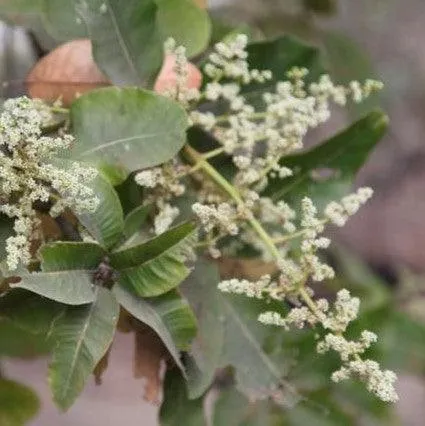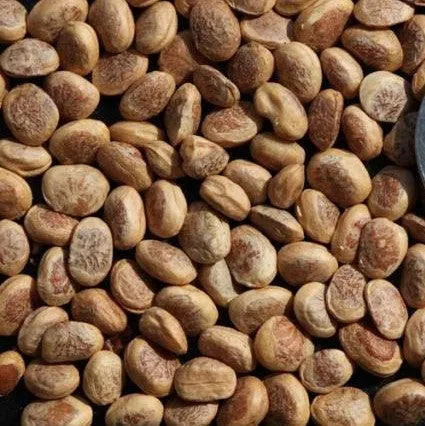- Common name:
- Chironji Tree, Almondette, Calumpong Nut, Cheronjee, Cuddapah Almond, Hamilton Mombin
- Regional name:
- Hindi - Char, Chironji, Chiraunji, Piyal, Pra-savak, Priyal, Marathi - Char, Charoli, Piyal, Tamil - Charam, Malayalam - Muungaappeezh, Nuramaram,Telugu - Char, Charumamidi, Priyaluvu, Raj-adanamu, Kannada - Charol
- Category:
- , ,
- Family:
-
Info
Chironji tree, scientifically known as Buchanania lanzan, is a deciduous tree native to India. It is also found in tropical regions of South Asia and Southeast Asia. This tree is known for its edible seeds, which are commonly used in Indian cuisine and traditional medicine.
Plantation
- Site Selection: Choose a location with well-draining soil and full sun exposure. Chironji trees prefer tropical or subtropical climates and can tolerate moderate drought.
- Planting Time: The best time to plant Chironji trees is during the rainy season or early spring to ensure proper root development.
- Spacing: Maintain a distance of about 20-25 feet between trees, as they can grow up to 50 feet in height and require ample space to spread their canopy.
Growing
- Watering: Water the tree regularly during the initial growth phase, gradually reducing the frequency as the tree becomes established. Chironji trees are moderately drought-tolerant once established.
- Fertilization: Apply a balanced fertilizer during the growing season to support healthy growth. Organic matter such as compost can also be added to improve soil fertility.
- Pruning: Prune the tree to maintain its shape and size, removing dead, diseased, or weak branches to promote better air circulation and light penetration.
Care
- Pest and Disease Control: Chironji trees are relatively resistant to pests and diseases. However, monitor for any signs of infestations or infections, and treat with appropriate measures when necessary.
- Mulching: Apply a layer of organic mulch around the base of the tree to help conserve moisture, regulate soil temperature, and prevent weed growth.
- Protection: In case of extreme weather conditions, such as frost, take necessary precautions to protect the tree by using frost blankets or temporary shelters.
Benefits
- Culinary Uses: Chironji seeds are widely used in Indian cuisine as a replacement for almonds, imparting a nutty flavor to dishes. They can be eaten raw, roasted, or ground into a paste for various recipes.
- Medicinal Properties: Chironji seeds possess various health benefits, including improving digestion, boosting the immune system, and providing relief from respiratory disorders.
- Skin Care: Chironji seeds can be used to make skin care products, such as moisturizers and face packs, due to their nourishing and moisturizing properties.
- Ecological Benefits: Chironji trees provide habitat for various species of birds and insects, contributing to the overall biodiversity of the ecosystem. They also act as an effective soil binder, preventing soil erosion in hilly terrains.
















